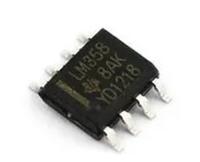MPLAB®ICD 2 In-Circuit Debugger/Programmer
In-Circuit Debugging Basics
Traditionally, embedded systems engineers use in-circuit
emulators (ICE) to develop and debug their designs and
then programmers to transfer the code to the devices. The
in-circuit debugging logic, when implemented, is part of the
actual microcontroller silicon and provides a low-cost
alternative to a more expensive ICE. In-circuit debugging
offers these benefits:
• Low cost
• Minimum of extra hardware
• Expensive sockets or adapters are not needed
• Debugging and programming a production line board is
possible
However, it has the following trade-offs:
• Use of some target system resources such as I/O
pins, program memory, data memory, and stack
Features
space. As a result, some portions of an embedded
application may not be debugged.
• USB (Full Speed 2 Mbits/s) and RS-232 interface to
host PC
• Triggering and breakpointing are limited to the built-in
capabilities of the in-circuit debugging logic.
• Real-time execution
• The target chip must be running with a clock and a
supply voltage. Often an emulator probe can run
without external hardware.
• MPLAB IDE compatible (free copy included)
• Built-in over voltage/short circuit monitor
• Firmware upgradeable from PC/web download
• Totally enclosed
• Supports low voltage to 2.0 volts (2.0 to 6.0 range)
• Diagnostic LED's (Power, Busy, Error)
• Read/Write program and data memory of
microcontroller
All-in-one Debugger/Programmer
Solution for Flash Products
• Erase of program memory space with verification
• Freeze-peripherals at breakpoint
The MPLAB ICD 2 (In-Circuit Debugger 2) allows
debugging and programming of PIC®and dsPIC®Flash
microcontrollers using the powerful graphical user interface
of the MPLAB Integrated Development Environment (IDE),
included with each kit. The MPLAB ICD 2 is connected to
the design engineer's PC using USB or RS-232 interface
and can be connected to the target via an ICD connector.
The connector uses two device I/O pins that are shared
between in-circuit debugging and In-Circuit Serial
Programming™.
Products Supported
The MPLAB ICD 2 currently supports most PIC and dsPIC
Flash microcontrollers. Flash PICmicro MCU’s not
supported are PIC16F72/73/74/76/77/83/84A.
The MPLAB ICD 2 firmware is continually being updated to
add support for new devices. A review of the README file
located in MPLAB IDE is recommended for the most current
list of supported parts. As new device firmware becomes
available, free downloads are available at
Host System Requirements
www.microchip.com.
• PC-compatible system with a Intel Pentium®class or
higher processor, or equivalent
• A minimum of 32 MB RAM
• A minimum of 40 MB available hard drive space
• CD-ROM drive (for use with the accompanying CD)
• Available USB or RS-232 port
• Microsoft®Windows®98, Windows NT®4.0,
Windows 2000 or Windows XP. USB support may be
limited by the Windows operating system, particularly
Windows 98/NT.










 LM317T数据手册解读:产品特性、应用、封装与引脚详解
LM317T数据手册解读:产品特性、应用、封装与引脚详解

 一文带你了解?DB3二极管好坏判断、参数信息、替代推荐
一文带你了解?DB3二极管好坏判断、参数信息、替代推荐

 LM358DR数据手册:引脚说明、电气参数及替换型号推荐
LM358DR数据手册:引脚说明、电气参数及替换型号推荐

 OP07CP数据手册解读:引脚信息、电子参数
OP07CP数据手册解读:引脚信息、电子参数
